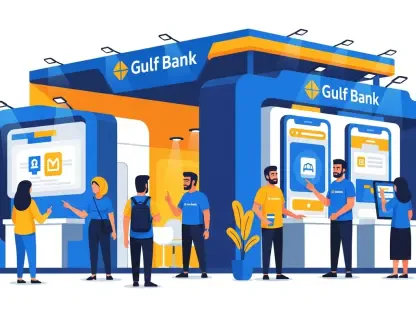Setting the Stage for a Payment Revolution
In an increasingly interconnected global economy, India’s cross-border payment market faces mounting pressure to deliver swift, transparent, and affordable solutions for millions of transactions each year. With over 1.3 million Indian students studying abroad and outbound tourism surging, the inefficiencies of traditional payment systems—marked by high fees and delayed settlements—have become a critical bottleneck. This market analysis delves into how a strategic partnership between Banking Circle, a global financial infrastructure provider, and EbixCash World Money, a leading AD-II licensed foreign exchange and remittance provider in India, is poised to transform this landscape with innovative technology and localized expertise.
The significance of this collaboration lies in its potential to address long-standing pain points for key demographics like students and travelers while setting a benchmark for future scalability into corporate sectors. By leveraging direct clearing networks and advanced tools like virtual IBANs, this alliance aims to redefine efficiency standards. The purpose of this analysis is to unpack current market dynamics, evaluate the partnership’s impact, and project future trends that could shape India’s role in global financial connectivity.
This examination will explore historical challenges, dissect innovative solutions driving change, and forecast emerging patterns in the fintech space. Stakeholders, from individual consumers to financial institutions, stand to gain actionable insights into navigating this evolving ecosystem. The focus remains on how such partnerships can bridge critical gaps and propel India toward a more integrated position in the international payment arena.
Deep Dive into Market Trends and Innovations
Historical Challenges and Current Market Gaps
India’s cross-border payment sector has long grappled with systemic inefficiencies that hinder seamless transactions. Traditional banking channels and agent-based transfers often impose hidden fees, extended processing times, and a lack of traceability, creating frustration for users like students paying overseas tuition or travelers managing foreign expenses. These issues are compounded by the sheer volume of transactions, driven by a growing diaspora and increasing global mobility, which traditional systems are ill-equipped to handle at scale.
Recent data underscores the urgency for reform, with transaction delays averaging several days in many cases, directly impacting user experience. Regulatory constraints under the Reserve Bank of India (RBI), while necessary for compliance, have historically slowed innovation by imposing strict controls on foreign exchange and remittance services. This backdrop of legacy challenges highlights a ripe opportunity for disruptive solutions that prioritize speed and transparency to meet the demands of a modern, globalized economy.
The market gap is particularly evident in the lack of tailored services for India’s unique demographic needs, such as simplified payment processes for recurring expenses like university fees. As digital adoption accelerates, the disparity between outdated systems and user expectations continues to widen, creating a pressing need for infrastructure upgrades. This sets the stage for analyzing how strategic collaborations can address these inefficiencies head-on.
Game-Changing Solutions Through Strategic Collaboration
A pivotal aspect of the partnership between Banking Circle and EbixCash is the integration of local clearing networks across major international corridors, including the UK, EU, US, Canada, Australia, Singapore, and the GCC. By enabling direct settlements through these rails, the alliance significantly reduces transaction times and eliminates intermediary costs that burden end-users. For instance, students wiring funds for education abroad can now expect near-instantaneous transfers, a stark contrast to the multi-day delays of conventional methods.
Transparency forms another cornerstone of this initiative, achieved through Banking Circle’s virtual IBANs and structured references. These tools provide real-time tracking and streamline reconciliation for recipients like universities, which often struggle with mismatched payment records and extensive documentation. Industry metrics suggest that such innovations can cut hidden fees by a substantial margin, fostering trust and reliability among users who previously faced uncertainty in tracking their funds.
While these advancements mark a significant leap forward, challenges such as navigating diverse regulatory landscapes and ensuring robust cybersecurity remain. The partnership’s ability to balance cutting-edge technology with compliance will be critical to sustaining momentum. Tailored solutions for India’s market, like simplified processes for recurring payments, further demonstrate a commitment to addressing local nuances, positioning this collaboration as a potential industry benchmark.
Data-Driven Insights and Market Impact
Analyzing current data reveals a burgeoning demand for efficient cross-border payment solutions in India, with transaction volumes projected to grow steadily over the coming years. Studies indicate that digital payment adoption, fueled by initiatives like the Unified Payments Interface (UPI), is reshaping consumer behavior, with a significant shift toward platforms offering low-cost and traceable transfers. This partnership aligns with these trends by prioritizing user-centric infrastructure that reduces friction in international money movement.
The immediate impact is most visible among key user groups such as students and travelers, who benefit from lower fees and faster settlements. For example, the elimination of intermediary costs through direct clearing can save users a notable percentage per transaction, translating into substantial savings at scale. Beyond individual benefits, the collaboration signals a broader market shift toward embedded financial services, where seamless integration with local systems becomes a competitive differentiator.
However, market penetration into rural areas and among less digitally literate populations remains a hurdle, as connectivity and awareness gaps persist. The partnership’s focus on scalable infrastructure offers a pathway to bridge these divides over time, potentially expanding access to underserved segments. This dynamic underscores the dual challenge of innovation and inclusivity that defines India’s fintech evolution.
Projections for the Future of Cross-Border Payments
Emerging Technologies and Regulatory Shifts
Looking ahead, the cross-border payment ecosystem in India is set to undergo transformative changes driven by technological advancements and evolving regulatory frameworks. Innovations such as blockchain for secure transactions and AI-powered fraud detection are expected to enhance system efficiency, minimizing risks and costs. These developments could further amplify the impact of partnerships like this one by ensuring robust safeguards against cyber threats, a growing concern in digital finance.
Regulatory reforms will also play a defining role in shaping market trajectories. The RBI’s continued push for digital payment ecosystems, potentially integrating cross-border platforms with domestic systems like UPI, could unlock unprecedented efficiency gains. Additionally, anticipated trade agreements and relaxed foreign exchange policies between 2025 and 2027 may broaden market access for providers, enabling greater scalability for services targeting SMEs and corporate clients.
Speculative trends, such as the adoption of central bank digital currencies (CBDCs), introduce both opportunities and uncertainties. A standardized, government-backed digital currency could streamline international transactions, but it may also challenge private platforms to adapt swiftly. The ability of collaborative initiatives to remain agile amid such shifts will determine their long-term relevance in a rapidly changing landscape.
Market Growth and Competitive Landscape
Projections suggest that digital cross-border payments in India could dominate transaction volumes in the near future, driven by increasing globalization and demographic trends like student mobility. Partnerships that leverage local expertise alongside global infrastructure are likely to gain a competitive edge, setting new standards for speed and affordability. This positions the collaboration under analysis as a frontrunner in capturing market share among tech-savvy users.
Competition within the sector is expected to intensify as more fintech players enter the fray, each vying to address niche pain points with innovative offerings. Differentiators such as end-to-end transparency and compliance with strict regulations will become critical in distinguishing market leaders from laggards. The focus on tailored solutions for India’s diverse needs could serve as a blueprint for other providers aiming to penetrate this high-growth market.
Geopolitical factors and economic policies will also influence future dynamics, with potential fluctuations in currency exchange rates impacting transaction costs. Strategic alliances that prioritize adaptability and cost-efficiency are better equipped to weather such uncertainties, ensuring sustained growth. This evolving competitive landscape highlights the importance of forward-thinking strategies in maintaining a foothold in India’s cross-border payment arena.
Reflecting on Market Insights and Strategic Pathways
Looking back, the analysis of the partnership between Banking Circle and EbixCash World Money revealed a transformative approach to tackling inefficiencies that have plagued India’s cross-border payment market for decades. The integration of direct clearing networks and virtual IBANs addressed critical user pain points, while a focus on transparency and compliance set a high standard for industry practices. This collaboration proved to be a catalyst for change, spotlighting the power of technology-driven solutions in a market hungry for innovation.
For stakeholders, the next steps involve embracing platforms that prioritize speed, traceability, and cost-effectiveness over traditional banking options. Financial institutions and businesses are encouraged to prepare for digital integration by partnering with fintech providers to embed seamless payment solutions, ensuring operational agility. Consumers benefit from actively comparing service providers based on transparent fee structures and real-time tracking capabilities, maximizing savings and convenience.
Future considerations include monitoring regulatory developments and emerging technologies like blockchain to stay ahead of market shifts. Advocacy for broader digital access in underserved regions emerges as a vital strategy to ensure inclusivity in financial services. Ultimately, the legacy of such partnerships lies in their ability to inspire a more connected and efficient global payment ecosystem, paving the way for sustained economic progress.









